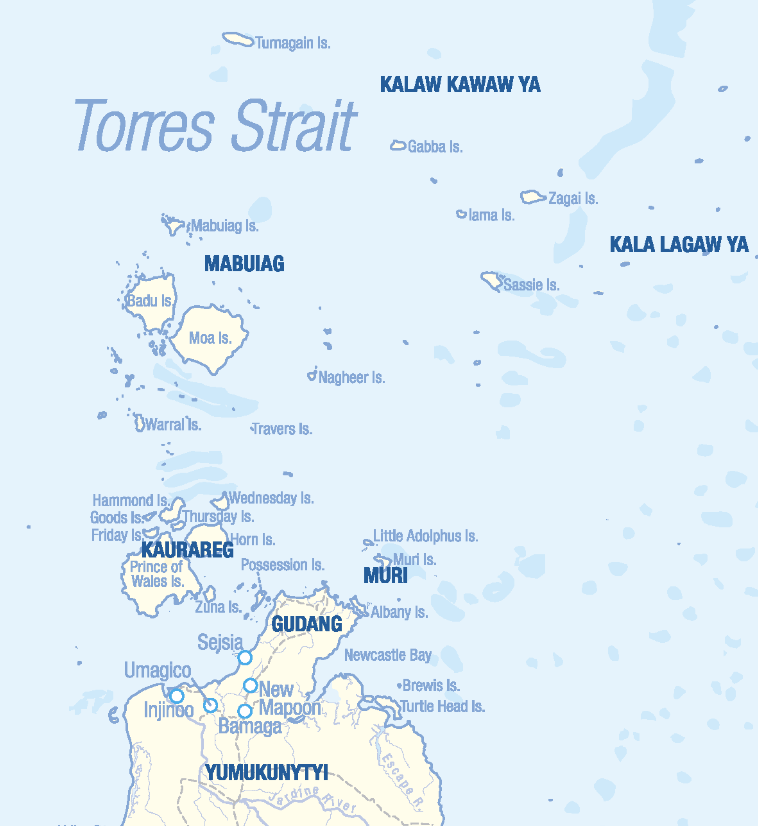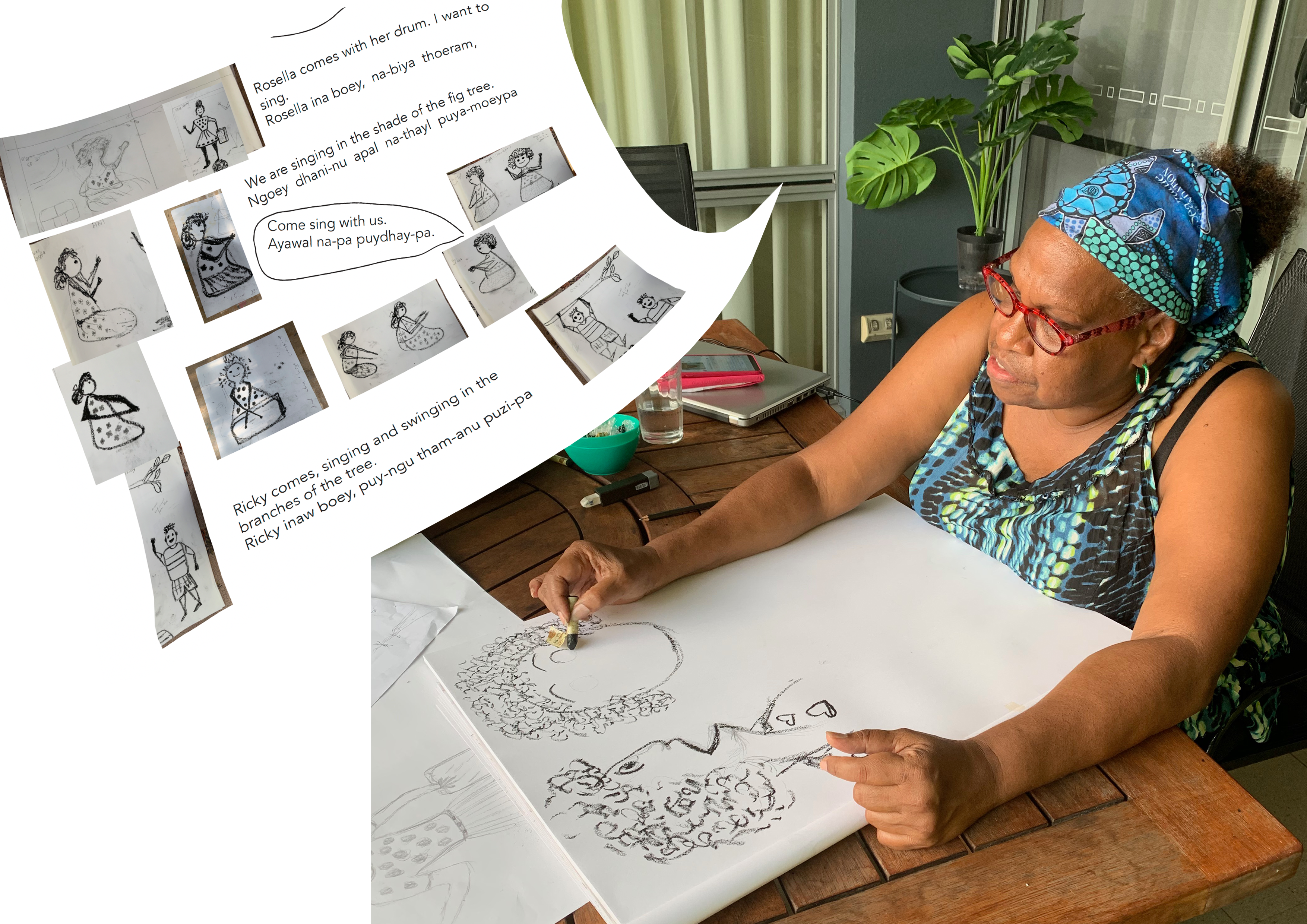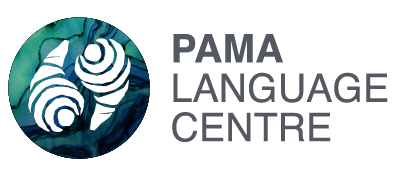Kalaw Kawaw Ya

DISCLAIMER:
The locations of the language varieties of Cape York Peninsula shown on this map are not intended for Land Claim use, and are an approximate guide only. Individual language project locations are based on information from publicly available documents.
This map is a work in progress and is to be regarded as a dynamic draft. Pama Language Centre welcomes additions and corrections to the draft map and to information about the language varieties listed.

Kalaw Kawaw Ya
Kalaw Kawaw Ya is a Paman language variety spoken widely in Dauan, Sabai and Boigu islands in the Top Western Torres Straits. It is also spoken widely in the Northern Peninsula Area, particularly in the Bamaga and Seisia communities. Whilst many people of the parental and grandparental generations continue to speak Kalaw Kawaw Ya, there is an increasing shift in language loyalty to Yumplatok (Torres Strait Creole) and Australian Standard English (especially in diaspora populations).
Kalaw Kawaw Ya remains the primary language of transmission of history, song and dance; as the older generations pass, there is great risk of loss of wisdom, identity and traditional knowledge (Harvey, 2021).
Storyboarding Sangki Sangki with Leonora Adidi
Sangki Sangki, a new picture book by Leonora Adidi, will be the first published book in in Kalaw Kawaw Ya, the language of Saibai Island. Sangki Sangki will be published by Pama Languages Press in 2023 and will include a read aloud ebook read by the author.

| AUSTLANG reference | Y1 | |
| AUSTLANG reference name | AIATSIS reference name | |
| OTHER REFERENCE CODE(S) | ISO 639-3: mwp | |
| LANGUAGE VARIETY NAME, PHONETIC TRANSCRIPTION | [kalaw kawaw ja] | |
| LANGUAGE VARIETY NAME, PHONEMIC TRANSCRIPTION | Ford, K., & Ober, D. (1991). Language in Australia: A sketch of Kalaw Kawaw Ya, In S. Romaine (ed.), Language in Australia. pp. 118–142. Cambridge: Cambridge University Press.
https://theswissbay.ch/pdf/Books/Linguistics/Mega%20linguistics%20pack/Australian/Kala%20Lagaw%20Ya%3B%20A%20sketch%20of%20Kalaw%20Kawaw%20Ya%20%28Ford%20%26%20Ober%29.pdf | |
| LANGUAGE VARIETY COMPLEX | Kala Lagaw Ya | |
| LANGUAGE STATUS | Shifting, Revitalisation | |
| PRACTICAL ORTHOGRAPHIES | Mission Spelling, developed for Polynesian languages in the Loyalty Islands, was the first orthography (Ray, S., Haddon, A.C., 1893, A study of the languages of Torres Straits with vocabularies and grammatical notes (part 1)). Ray was the linguist on the Cambridge Expedition and he included a number of diacritics to mark vowel length.
Ephraim’s Practical Orthography (EPO) is the dominant orthagraphy. Bani, Ephraim 1971a, ‘A proposal for a new spelling system for the Western Island Language of Torres Strait’, in Bani & Klokeid (eds). –1971b, ‘Buuthmathamai Gidha’ [Explanation of a Mabuiag pun], in Bani & Klokeid (eds). –1971c, ‘Some old words from Mabuiag Island explained for the younger people of today’, in Bani & Klokeid (eds). –1971d, ‘Remarks on noun-verb compounds and some uses of the elative case in Mabuiag’, in Bani & Klokeid (eds). –1971e, ‘Information on the verb uthui “to sleep”‘, in Bani & Klokeid (eds). –1975, ‘Ina Aadhi’, School of Australian Linguistics, Casuarina Community College, Darwin (includes the legend of Ii, its translation into English and a glossary). –1976, ‘Mabuyagiu Naul: songs from Mabuiag’, School of Australian Linguistics, Darwin Community College, Casuarina (includes 16 songs transcribed, translated and annotated by Ephraim Bani). –1976, ‘The language situation in Western Torres Strait’, in P Sutton (ed.), Languages of Cape York, AIAS, Canberra, pp. 3-6. –1977, ‘Summary report of fieldwork’, AIAS Newsletter 7 (new series), pp. 30-4. –1979, ‘Presupposition in Western Torres Strait Language’, AlAS Newsletter 12 (new series), pp. 38-40. –1981, ‘Sign language’, Identity 4(5):19. –1987, ‘Garka a ipika: masculine and feminine grammatical gender in Kala Lagaw Ya’, Australian Journal of Linguistics 7(2):189-201. –2001, ‘The morphodirectional sphere’, in J Simpson, D Nash, M Laughren, P Austin & B Alpher (eds), Forty years on: Ken Hale and Australian languages, Pacific Linguistics, Canberra, pp. 477-80. A third orthography, described in an in-production dictionary (Mitchell and Ober, unpublished) makes compromises and considers currency of use. Unlike Mission Spelling, which denotes semi-vowels with ‘u’ and ‘i’, and EPO which denotes them as ‘w’ and ‘y’ respectively, Mitchell and Ober consider them consonants and write them as ‘w’ and ‘y’, and also employ – inconsistently – diacritics to mark vowel length. This orthography is targeted at language-learners rather than language-users. Mission Spelling Orthography: EPO: Mitchell and Ober: | |
| CURRENT LANGUAGE ACTIVITY | Leonora Adidi, based in Bamaga, currently works with the Pama Language Centre on revitalisation efforts. | |
| HISTORICAL BACKGROUND | Summary of Present Situation, Past Investigations + links to further reading.
Alistair Harvey (2021) In Peter K. Austin (ed), Kalaw Kawaw Ya (Saibai Island, Western Torres Strait Islands, Australia) – Language Snapshot” · ELPublishing | |
| DICTIONARY | WATCH THIS SPACE | List links to Dictionaries. List Harvard-system reference. |
| OPEN ACCESS ARCHIVAL RESOURCES | Link to archival resources, conditions of access to be determined by relevant ALAT. | |
| FIND A TRANSLATOR | Leonora Adidi is a NAATI-accredited translator. She can be contacted through Pama Language Centre. | |
| CONNECT WITH SPEECH COMMUNITY | Leonora Adidi is leading language revitalisation in the NPA. | |


